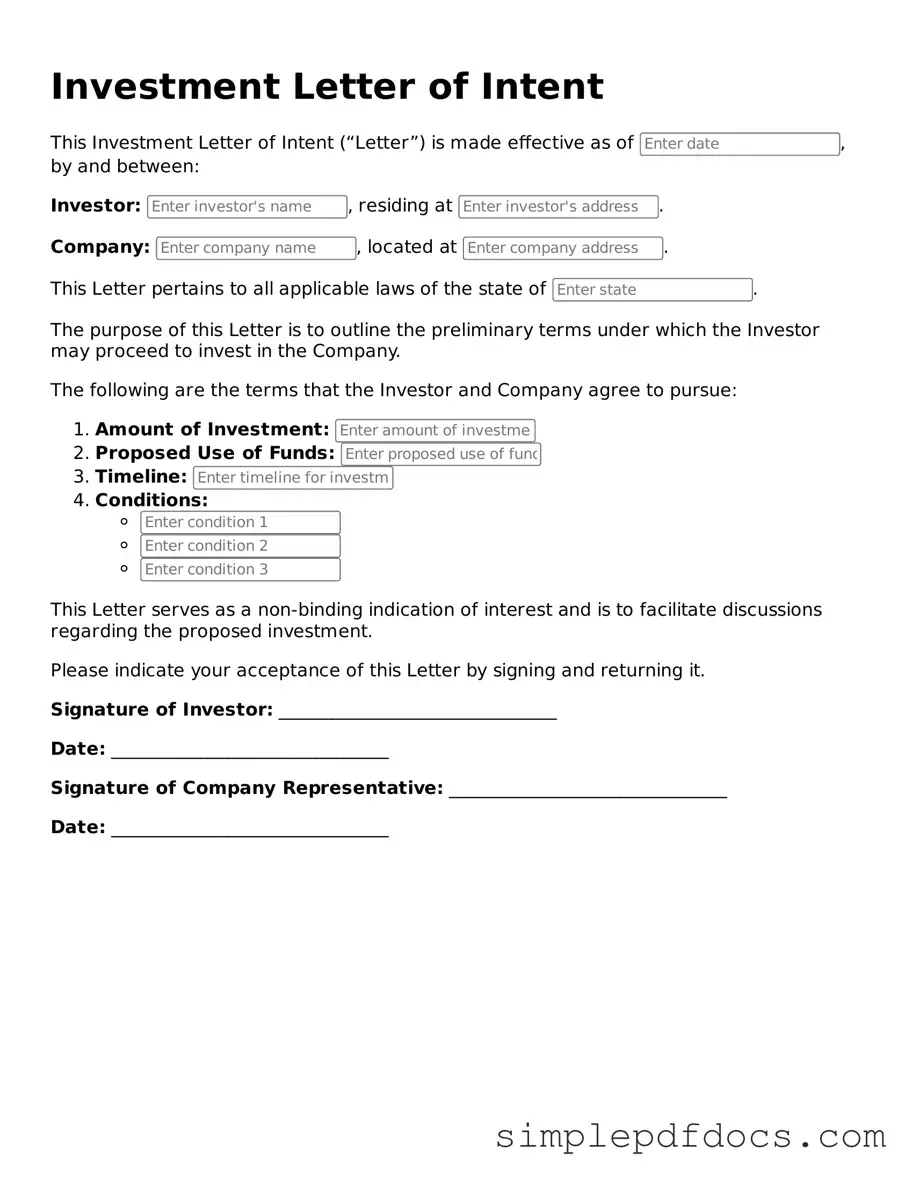When embarking on an investment journey, clarity and mutual understanding between parties are paramount. The Investment Letter of Intent (LOI) serves as a critical tool in this process, outlining the preliminary terms and intentions of the investment before any formal agreements are drawn up. This document typically includes essential details such as the amount of investment, the type of security being offered, and the timeline for closing the deal. Additionally, it often highlights any conditions that must be met before the transaction can proceed, ensuring that both parties are aligned in their expectations. By capturing the essence of the investment relationship, the LOI not only sets the stage for future negotiations but also helps to establish trust and transparency. Whether you are an investor looking to secure a stake in a promising venture or a business seeking funding, understanding the components of the Investment Letter of Intent is crucial for navigating the complexities of financial partnerships.
